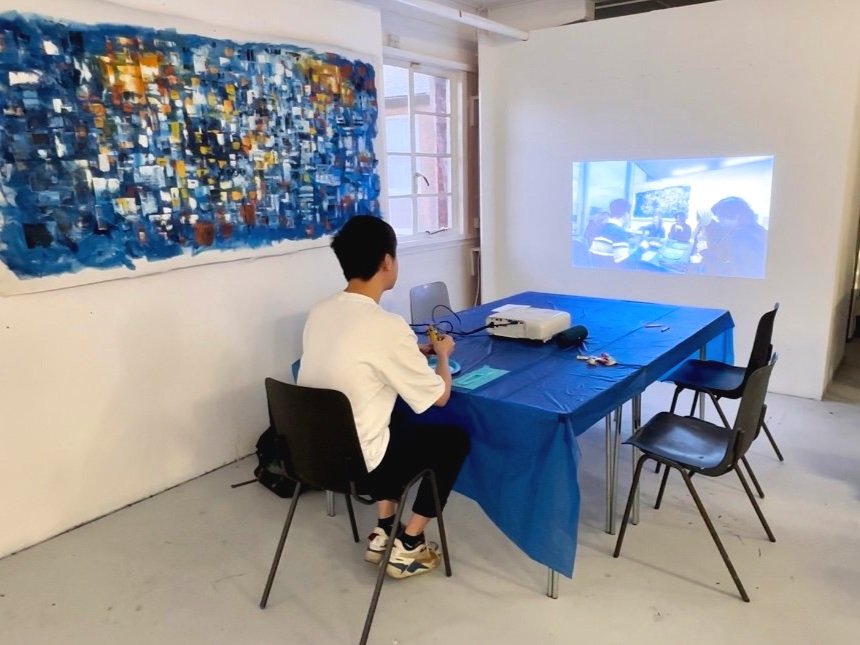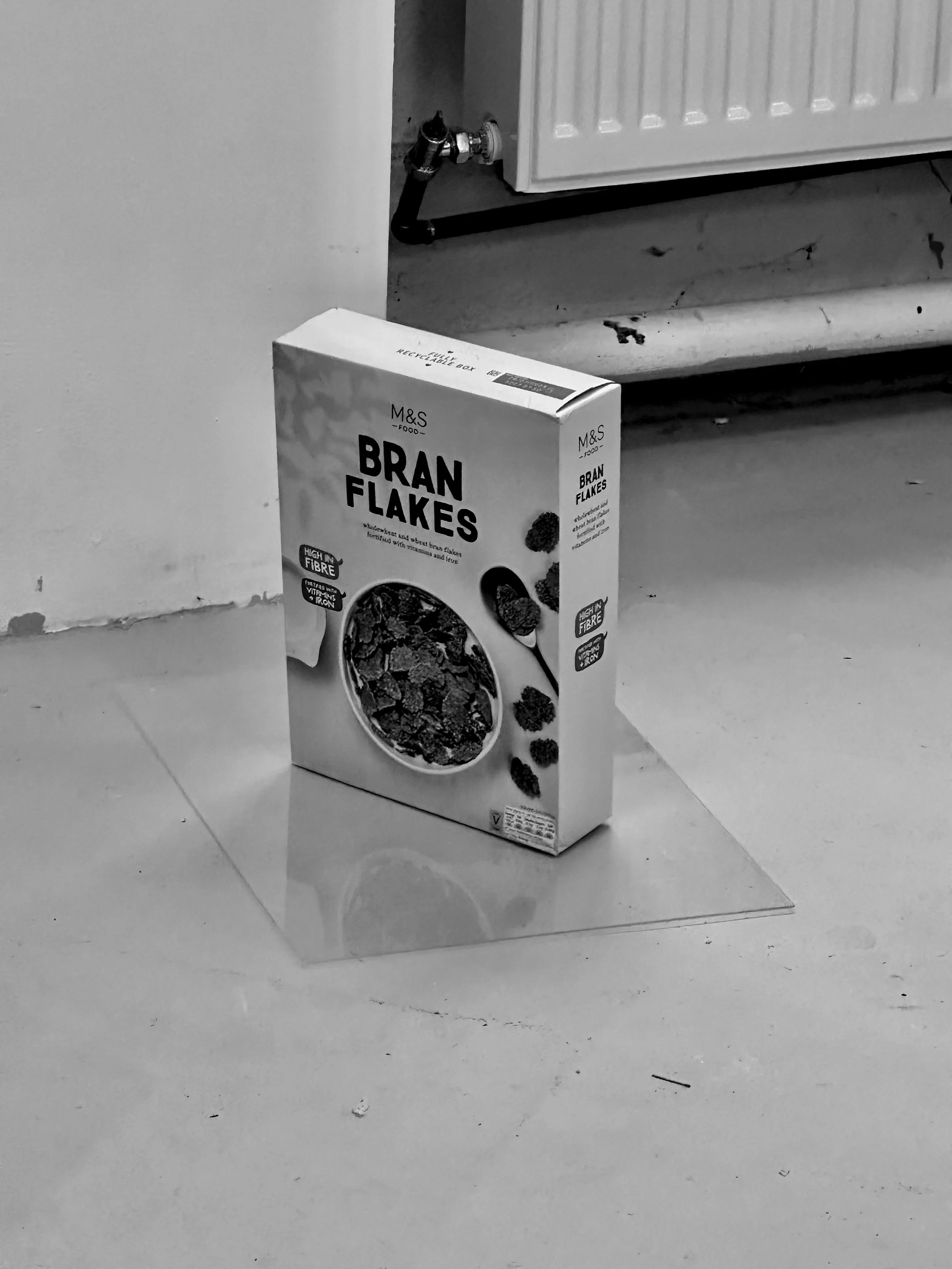The Door Project: the dilemma of intersectional power between government control and citizens empowerment
2024 MARCH - Ben Pimlott Building, London AN EXPLANATORY INTERVIEW OF “The Door Project”
INTRODUCTION
To many, a "door" embodies symbolism associated with transition, metamorphosis, and the boundary between contrasting states. It can represent the movement from physical to abstract spaces or simply the act of moving from one room to another. For Joshua, “doors” hold profound significance throughout his artistic process. He perceives them as beacons of guidance amid tumultuous times, serving as coordinates within his mental space. Through the invitation of individuals from the art school community, Joshua embarks on a project that delves into the intricate dilemma of power dynamics at the intersection of government control and citizen empowerment. The focal point of this project is a private property's door, a conduit that links a space of unimpeded freedom of speech with an oppressive community subjected to censorship and inhumane regulations.
As an observer, he observes people traverse the doorway. They unconsciously engage with it, leaving their mark through graffiti and interactions with fellow participants. In his role as the project's coordinator, Joshua assumes the position of an enforcement officer or authority figure within society. From this unique vantage point, he seeks to comprehend their predicament as intermediaries, responsible for striking a delicate balance between safeguarding public order and preserving freedom of expression within political demonstrations.
By surveilling and exerting a certain degree of control, Joshua records individuals' engagement with the door, eventually covering the graffiti art and concealing the door with a layer of white paint. This dialogic presentation prompts a deeper examination of how European countries, capitalist states, and communist leaders all exhibit authoritarian tendencies in their respective domains.
PART 1 _________ TOGETHERNESS
The artwork unfolds in two distinct parts. It begins with Joshua's transformation of his studio space into a dining area, inspired by the unexpected sight of a cereal box in an art studio. This surreal endeavour seeks to challenge conventional boundaries and explore untapped possibilities, as Joshua defies the paradigmatic function of a studio by redesigning it with tablecloths, cutlery, and an array of food.
In the first part, Joshua invites six friends to partake in this extraordinary dining experience, capturing the entire process on film. From the studio's metamorphosis into a dining space to the culmination of the meal and the departure of the participants, this recorded footage serves as a vital archive. Within the video, the participants navigate the unfamiliar environment and each other's company, generating a palpable sense of awkwardness that adds spontaneity and emotional depth to the work. Titled “What's Togetherness?”, this piece delves into Joshua's personal exploration of the concept, emphasising the interplay and interactivity among individuals occupying the same time and space.
Simultaneously, the video showcases a significant idea of “exchange”. Each participant presents Joshua with a personally chosen object, symbolising themselves. This act alludes to the idea of equivalent exchange prevalent in today's society, where the participants trade an object for the opportunity to indulge in the dining experience, highlighting the notion of opportunity cost within our economy.
The dining space itself draws inspiration from the colours found within Joshua's studio painting. The painting serves as timeless witness, remain unchanged throughout the project, juxtaposed against the ephemeral and transformative nature of the dining event and experimental performance. This juxtaposition echoes the sentiment expressed by French writer Jean-Baptiste Alphonse Karr in 1849, “plus ça change, plus c'est la même chose” (the more things change, the more they stay the same). It underscores the enduring nature of our fundamental values, reflected in the presence of the paintings and their colours, amidst the ever-changing impermanence of human existence. Additionally, the paintings embody the Zen Buddhist concept of “Shoshin”, encouraging an attitude of openness, eagerness, and the absence of preconceptions when engaging in exploration and study.
From the captivating paintings in the studio to the carefully curated objects and cutlery adorning the dining table, a harmonious ambiance is crafted. This inviting atmosphere fosters free and spontaneous interactions among the participants, the space itself, and the surrounding objects, forming a dynamic trio that intertwines individuals, space, and time.
PART 2 _________ SOLITARINESS
The second part of this artwork comprises a 6-minute live performance utilizing mime. Joshua has chosen to recreate the dining setup from Part 1 within a performance space by relocating the table, chairs, and the painting from his art studio. Alongside the pre-existing objects seen in the videography, additional objects (listed in the archive) provided by the participants during the experimental dining project are placed on the dining table, symbolizing their connection to specific personal memories. Unlike the initial 7 sets of cutlery, the performance now involves only the artist himself, with a single set of cutlery and a solitary chocolate bar placed on the sole plate.
The performance commences as Joshua switches on the music, playing Frederic Chopin's renowned composition, "Nocturne No.2 in E-flat Major Op.9 No.2." Joshua finds the enchanting nature of nocturnes captivating, believing that Chopin's piece, especially the popular "E-flat Major Op.9 No.2," can help the audience connect emotionally through the familiarity of the melody.
Polish pianist Jan Kleczynski once noted, "It is impossible to deny certain resemblances (Chopin's No.2 in E-flat Major) to Field's first Nocturne," referring to John Field, an Irish pianist credited with inventing nocturnes. Kleczynski observed resemblances in terms of key, rhythm, and other peculiarities, yet he acknowledged a distinct tinge of solemn sadness in Chopin's work, which began to manifest itself. The repeated surges and ornamentations of the music blend seamlessly with the performance and the silent videography.
As Joshua consumes his chocolate while watching the videography alone in the space, the absence of speech provokes a peculiar sense of solitude within the performance. A duality between the past and present is depicted as the live performance echoes the behaviors captured on the wall. Is the live performance in the present while the videography represents the past, or vice versa? Over time, the live audience's perceptions shift, transitioning from a state of uncertainty in the gray area between togetherness and solitariness, to ultimately acknowledging the paradigmatic change within the observed phenomenon.
Inspired by everyday life, many of us have experienced moments of being alone in a space, engaging in activities such as eating or finding personal amusement, much like Joshua does in his performance. However, do we yearn for joyous moments spent with others, reminiscing about past memories and people? Or can we find solace in quality time spent alone, away from the crowd, as depicted in the performance? The tension and confrontation between opposing emotions, and the complexity of situations in our daily lives, often lead us on an endless journey of self-discovery and understanding of the people and the world.
It becomes a quest to search for memories, togetherness, solitude, and, last but not least, love.
“DINING ALONE?”
Multidisciplinary Art, Mixed Media
Oil on Canvas (200cm x 150cm), Performance (6m 13s), Videography (5m 56s), Installation (3m x 1m)
DINING ALONE? PART 1: TOGETHERNESS (5m 56s)
DINING ALONE? PART 2: SOLITARINESS (6m 13s)
ACKNOWLEDGEMENTS
Appau Junior Boakye-Yiadom
Bert Zhang
Debbie Wei
Edwin Oh
Geo Suh
Jacqueline Pennell
Jamo Baramee Punyabukkana
Liv Li
Melody Chan
Quin Reli













